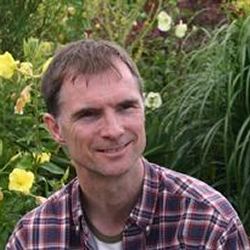Although the transmission of the legacy of Murshid Samuel Lewis is the responsibility of the Sufi Ruhaniat International, training in leading the Dances of Universal Peace and Walking Concentrations is open to persons of all spiritual streams, not just to Sufi initiates.
Like native mysticism, this tradition is communicated directly from teacher to student, thus ensuring that subtleties – such as the transmission of sacred atmosphere and attunement, which are impossible to systematize – can be effectively embodied. By linking to a mentor one connects with the power of the lineage of this body of work.
The process of becoming a dance leader requires introspection and attunement. When a dancer is ready to lead, they find a mentor who can guide them, and become a “mentored leader”.
New leaders naturally look for a mentor to whom they feel attuned, one who has developed qualities they themselves would like to cultivate. Mentors work in different ways with their students (mentees); e.g., some mentors offer training programs or mentoring groups, and others work individually. New leaders are encouraged to inquire of mentors regarding their methods.
Many people begin leading the Dances by sharing a Dance or Walk in a local community gathering or meditation group. Commitment increases as one simultaneously chooses and feels chosen by the Dances and Walking Concentrations as spiritual practice. The Dances are freely given and freely received, so there is no restriction on sharing a couple of Dances with friends. However, as with any other discipline, if you want to manifest the fruit of the practice you need to cultivate deep roots. These roots are nourished through patience, practice and sincere motivation.
Many people begin leading the Dances by sharing a Dance or Walk in a local community gathering or meditation group. Commitment increases as one simultaneously chooses and feels chosen by the Dances and Walking Concentrations as spiritual practice. The Dances are freely given and freely received, so there is no restriction on sharing a couple of Dances with friends. However, as with any other discipline, if you want to manifest the fruit of the practice you need to cultivate deep roots. These roots are nourished through patience, practice and sincere motivation.
Choosing certification and working towards this with a mentor furthers the process of learning to lead the dances. As one moves through the various stages of learning, which includes learning about oneself, there is feedback and validation from a more experienced teacher. The mentored leader may be certified when the mentor is satisfied that the mentee has achieved what is appropriate specifically for them in relation to the required criteria. When that moment arrives, the mentor informs the Community Coordinator and requests that the mentee now be registered as a “certified leader“. The mentoring relationship continues beyond certification, and indeed is ongoing at every stage on this path of mastery.
You can read in more depth about this leadership journey here.
If you are looking for a mentor, there is a list of UK-based dance mentors and mentors-in-training here.
Criteria for Certified Leader
Traveling with one’s mentor, maintaining an active spiritual practice, studying the Elements of Mastery, developing the capacity for unflinching self-witnessing, and maintaining membership currency are the prerequisites for certification.
The mentor will evaluate the student’s commitment to spiritual practice, attunement, knowledge of Dance history, and technical proficiency in leading the Dances and Walking Concentrations.
To be certified as a leader one will be committed to the following criteria:
1. At Least One Sacred Path or Spiritual Tradition
In-depth experience with at least one of the many sacred traditions of the earth is required. Included here is the principle of dharma (spiritual path), that is, having a regular practice and/or prayer life. A one-to-one relationship with a guide is encouraged. This guide or teacher may be the same as the person’s dance mentor or not. The intention is that personal deepening in inner life and experience of fana (effacement of the ego) will be promoted under guidance from an embodied being.
This relationship may include ongoing apprenticeship with spiritual teachers of any tradition, but must be a genuine relationship, not merely occasional attendance at workshops, retreats, or rituals. The relationship may include the formal giving of practices and initiation, an active committed engagement with a congregation or spiritual community, or an informal “working-with” relationship. Ongoing psychotherapy and counseling, while they may be helpful to the growth process, are not substitutes for this sacred relationship.
2. Self-Knowledge
The Dances are powerful vehicles of energy. When they pour through us they touch not only our highest realities, but also stir places still unlit and unresolved. Developing leaders understand this and acknowledge shadow potentials in order to work with unconscious projections that naturally arise. They need to be aware that their role as leaders may influence dancers’ perceptions, and they need to be able to self-witness their own afflictive emotions as they arise in order to work with them consciously. In a good working mentoring relationship, the student will be receptive to the reflections and feedback of the mentor in dealing with these issues.
3. Attunement, Transmission, Sacred Atmosphere
It is essential to walk in the footsteps of experienced Dance and Walks teachers in order to develop an attunement to the blessing stream of Samuel Lewis (Murshid SAM). The ability to attune and the willingness to surrender to this stream of blessing are the most important aspects of leading the Dances and Walks. The certified leader is able to demonstrate the capacity to convey a sacred atmosphere consistent with the tradition and feeling of the Dance being presented, effacing their ego-personality in order to let grace flow through. Presence, magnetism and balance are spontaneous and apparent.
4. Technical Proficiency, Knowledge of Traditions, Dance Repertoire
Sufficient technical proficiency to “get the job done” is required. Mentor and mentee acknowledge any additional work needed with rhythm, voice or sound and have an agreement for how this work is occurring.
For certification, the dance leader will have mastered at least 4 of the Original Dances of Murshid Samuel L. Lewis. In addition, the dance leader will be able to present with appropriate attunement a minimum of 20 Dances from a variety of traditions. No more than 3 Dances may contain sacred phrases in the vernacular language of one’s country (i.e., “the plain variety of language in everyday use by ordinary people”). (Please refer to Foundation Dances and Walks Manual.)
No dance is a Spiritual Dance because it is called that; it does not mean a certain form or technique, nor a ritual. … What must remain is the sacred phrase; this, the sacred phrase, and not the form, is the foundation of development along this line. (Samuel L. Lewis, 2)
A phrase arising from a Divine Messenger has several values. Its very nature points toward God realization. The multitude of its repetitions are marked in the cosmos itself. The devotee becomes attuned to this tremendous cosmic magnetism. Therefore it is often more beneficial to repeat phrases that have been uttered many times than to use familiar terms which are translations of these phrases but do not have the same echoes in the universe.
(Samuel L. Lewis, 3)
One will also have the ability to lead a partner Dance with progression, a Dance in combination with a Walk practice, and several Dances consecutively, building on a central tone or sacred atmosphere.
The leader will be familiar with the writings of Murshid Samuel Lewis and Hazrat Inayat Khan through reading and study. (Please refer to the Bibliography and Study Materials and Resources.)
5. Walks Embodiment
The Walking Concentrations are embodiment practices that have the potential to integrate into everyday life the states experienced in the Dances. Whether a dance leader leads Walks in every session is not as important as mastering the effects of the Walking practices in their own being.
A certified dance leader will be able to lead the “Toward the One” Walk, the Center Walks, the Element Walks, and the Sun and Moon walking practices from the Planetary Walks or Astrological Yoga. (See Foundation Dances and Walks Manual.)
6. Social Responsibility
A dance leader does not lead in a vacuum but in a mandala of dancers, musicians and other leaders. It is expected that a dance leader who works in ongoing circles will become aware of a wide range of social responsibilities to the circle, and to one’s greater surroundings, and will attempt to become skillful at communication, conflict resolution, mediation, and team building. Dance leaders and mentors are encouraged to avail themselves of training in these interpersonal skills, through workshops offered by the Mentors Guild or through other opportunities.
We wish to follow the example of Murshid SAM whose life emphasized open-hearted service and generosity rather than a desire for recognition, wealth or power. Throughout the existence of the Mentors Guild, dance leaders and mentors have worked in positions of service in their own Dance communities and in the International Dance Network at large. They have donated generously of their time, money and resources in order to further the work in benefit to all beings. We encourage dance leaders and mentors to continue this tradition of service and generosity in whatever way they feel moved to do so.
“We think we are about singing and dancing, but we are really about creating peace.” (Murshid SAM, paraphrased by one of his early students).




































